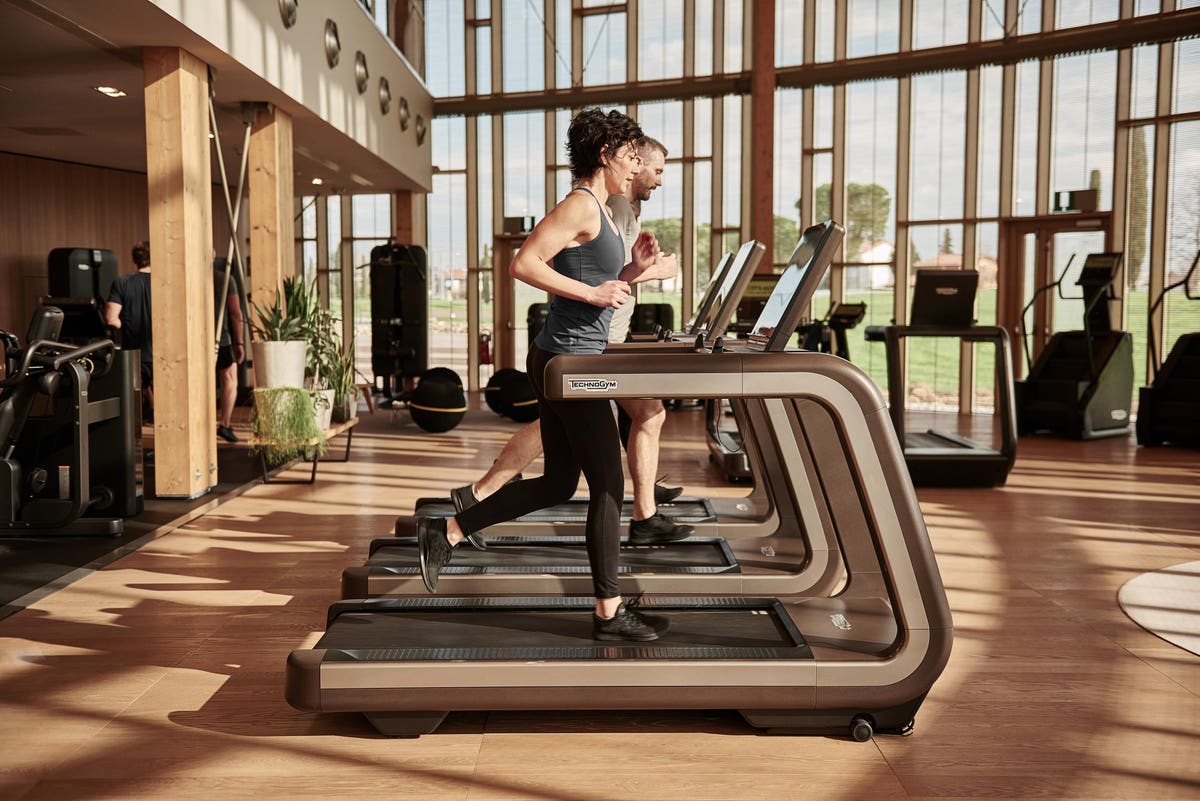It’s tough to imagine now—in a time when fitness and health are not only cornerstones of life but also multi-trillion-dollar industries with seemingly innumerable brands, gear, and machines to go with—however, a mere 40 years ago, physical wellness as we know it today didn’t yet exist. There were no home gyms or holistic health assessments, and the fitness centers that did exist were reserved mostly for elite athletes and bodybuilders and filled with industrial dumbbells and pared-down benches. Italian designer and fitness enthusiast Nerio Alessandri took note of this, and struck by the lack of equipment available simply for lifestyle users, like himself, he decided to do something about it.
The then-22-year-old made it his mission to craft a machine that combined his passion for technology and design with his love of fitness, one that would appeal to professional and amateur users alike, and in 1983, he did just that with the debut of the Hack Squat. But Alessandri knew this was only the beginning, and shortly after launching the Technogym brand, he began working on a series of other fitness equipment, including the first-ever complete gym designed for home use. Within a few years of its founding, the fitness lifestyle company announced partnerships with Formula 1 as well as several football clubs, becoming their official supplier of training equipment.
It was during the 1990s, however, that Technogym became a true wellness pioneer, going beyond traditional fitness machinery to create a range of personalized, holistic health tools. The decade saw the launches of the CPR (Constant Pulse Rate) system, which determined the intensity of a workout based on the user’s heart rate, a rehabilitative equipment range designed for the recovery process, and the Wellness System, the first-ever personal workout device to keep track of exercise programs and training data. But most notably, this era of Technogym was marked by the introduction of wellness as a concept, an all-encompassing, holistic approach not only to fitness but to life more broadly.
“Wellness is a lifestyle, and lifestyle means seamless integration,” Alessandri explains. “It’s continuous, covering every touchpoint consistently. It’s both the big picture, long-term investment and the day-to-day details, and it’s the balance between mind, body, and spirit.” But 30 years ago, when Technogym first coined the term, it wasn’t very widely understood. “Now, everybody knows about wellness; it’s the new dream,” the founder says. “But in 1993, no one knew what it meant. Fitness was easier because it was visual and hedonistic, but leveraging wellness as a holistic idea required education and information to build awareness.”
So, Technogym invested heavily in exactly that. The company partnered with the World Economic Forum to promote wellness as an opportunity for economic and sustainable development, and it introduced several health and lifestyle initiatives around its Italian headquarters, including the creation of the Wellness Foundation, to share the concept of wellness on the ground level. Technogym also gave a lot of thought to what its role as a brand would be in its customers’ wellness. “Everything is connected—offline, online, globally, locally, long-term, short-term,” Alessandri says. And he knew his company’s product offerings should reflect that.
With this in mind, Technogym began devoting considerable energy to its understanding of movement, nutrition, and health, drawing upon data from athletes and real users to develop and improve its equipment. Around the same time, in 2000, the company became the first official supplier for athletic training at the Olympics, marking the start of a now-30-plus-year partnership. Through its work with the tens of thousands of Olympians across the world, Technogym has been able to test its products on the world’s foremost athletes and has used advanced biometric assessment to measure performance, safety, and efficacy. “With the Olympics, as well as our Formula 1 and other high-level sports partnerships, we collect all of the information and test products, software, devices, wearables, everything,” Alessandri notes. “We receive a lot of feedback from these partners, and we use that to enhance our products and deliver.”
In recent years, there’s much wider understanding of wellness, perhaps an effect of some of Technogym’s efforts over the last 30 years to build awareness around the concept. Now a global phenomenon, with a $1.5 trillion market value to match, wellness is an increasingly crowded field, and consumer demand for excellence is greater than ever. As a result, Technogym has found itself facing greater competition and more pressure to set itself and its products apart. But Alessandri isn’t worried.
“People want the best today, and they’re willing to invest in better quality of life. So, you need competence, credibility, technology, patents, and facts to back it up, and that’s exactly what we have” the founder says. “Technogym today has an ecosystem. We have 35 million people using our equipment in 120 countries and 40 years of work and proof behind it.” Having such an ecosystem, which connects so many people and facilities with incredibly precise, advanced personalization and technology, he believes, makes the barrier to entry too high for competition, and it shows.
For 40 years, Alessandri has championed constant improvement and innovation, ensuring he and his employees are never satisfied with the status quo—and he is certain this is what will push the company to success for many years to come. “Innovation is always our key driver for growth—not just innovation in the product but also in the approach, the culture, the marketing and development, the capital, really everything,” he says. “Our motto is ‘If it works, it’s obsolete,’ and that shapes all of the ideas we have for the future.”
Read the full article here





